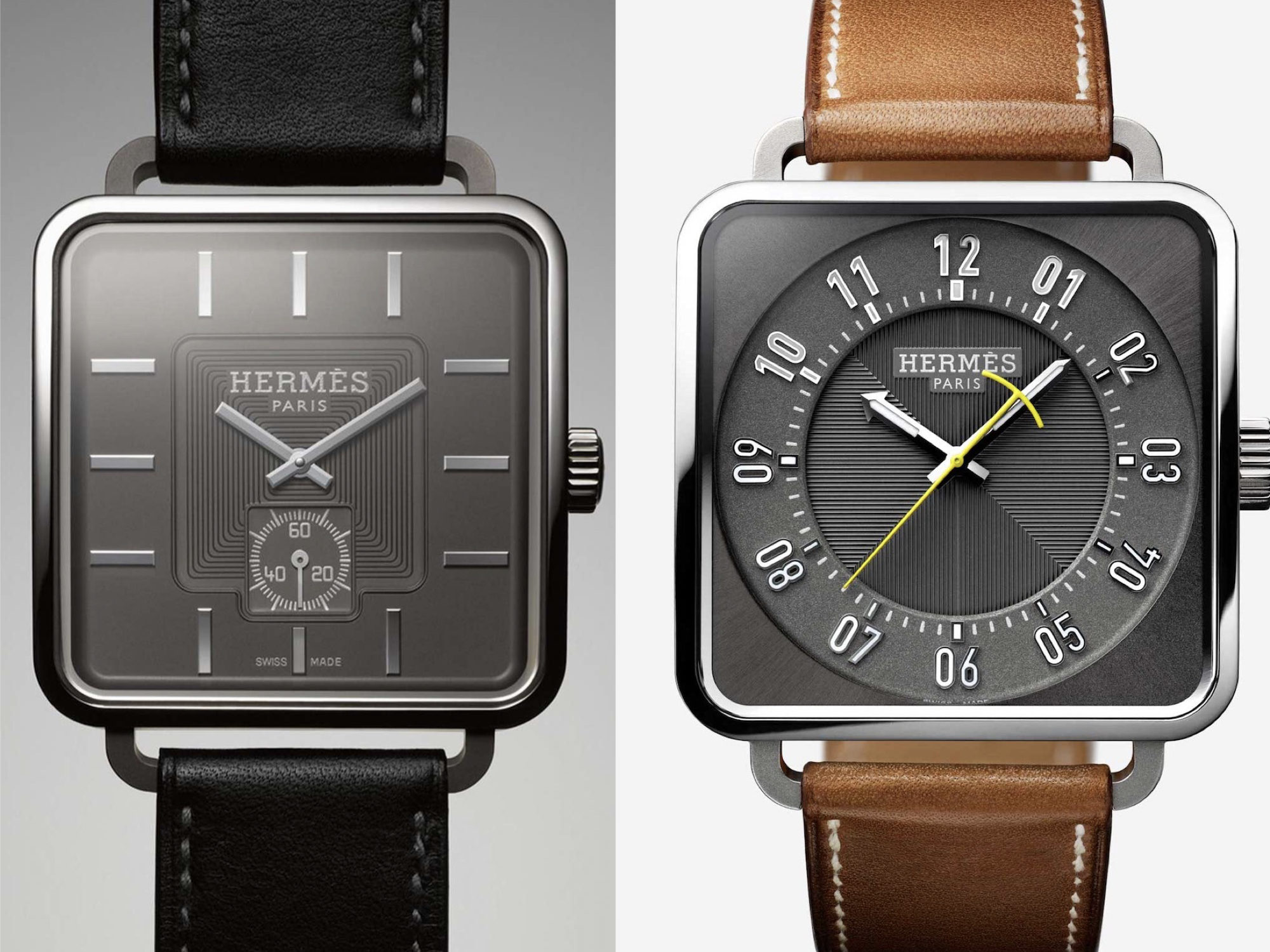Marc Bertier is a global design stalwart whose body of work spans five decades, and encompasses everything from architecture to furniture and consumer electronics. Eight years ago, he penned the rectangular Hermès Carré H, appropriately nicknamed “the architect’s wristwatch.” The Frenchman’s latest project is a redesign of that landmark timepiece—expanding the dimensions, tweaking the shape, and overhauling the dial to create an updated, special-edition version. On the eve of its debut, we caught up with Berthier, who, at 83, remains outspoken as ever.
Marc Berthier Has “Never Belonged” in the Design World
His creations have been recognized by MoMA, produced by Knoll and Hermès, and featured on the cover of Time magazine. Why does Marc Bertier still feel like an interloper?
INTERVIEW BY STEPHEN WATSON
October 01, 2018


When you conceptualize a new piece, do you have an idea of what you want, or do you start from scratch?
Well, the initial brief for the Carré H [in 2010] was very open. It was from Jean-Louis Dumas, the former CEO of Hermès, who has since passed away. He was just like, ‘What would an Hermès men’s watch be for you?’ The idea of the square wasn’t even there. It was supposed to be a chronograph. I’d never done a watch before, only architecture.
I told Jean-Louis Dumas, ‘I think that when it comes to a men’s watch, it’s always an incarnation of your hero, like an actor or sports star.’ To me, the ‘hero’ for Hermès would be someone who inspired you to do new things, this kind of character, like an explorer. We started trying to define this person. I mentioned doctors, poets, and we started to have a very engaging conversation. It felt like a mission. We used to joke about Saving Private Ryan. Like, ‘We have to save Hermès by finding the identity of this watch.’
So who’s idea was it to revisit the design?
I started to have discussion with [Hermès artistic director] Pierre-Alexis Dumas, the son of Jean-Louis … about bringing back this watch, making it a little bit more consensual. The first one was maybe, at least in the shape, a little bit edgy. This one is easier to approach, more seductive, and in 2015 we began work on it.
When you renew a model, the first solution is to follow the trends. But I was really interested in looking at it [in terms of] evolution, and the evolution of the world and society in the wider sense. Which brings us back to the explorer. The world is getting more and more diverse. People are traveling, people are exchanging. I experienced this through my architectural office and my own creation, but also through my family. We are a long line of ‘perfectly French people,’ not married to someone from another country. The people on my team in the architectural office, there’s a lot of mixed people, and I now have a grandson who is mixed race. All this crossing and these cultural exchanges, they are the things that are most important. I am not with someone like Donald Trump.
So I thought about [the new Carré H] in terms of incarnation, who is the man behind this watch [today]? The first one was for a small group of initiated people. The second incarnation of the watch … it’s a wider expression. It’s still for the man who travels, who is curious, who will cross cultures. But [now] he doesn’t have to be from such a small group.
As an architect, do you ever have the desire to go back and change a building?
This has happened to me, yes. I was in charge of the architecture for Galeries Lafayette, the French equivalent of Saks Fifth Avenue. To go back and move an escalator, just to move these mechanical stairs, was more complicated than being at war.
In France, we have strong laws protecting historical buildings. I’m a very technical architect and very passionate about this [history], but at the same time open [to change], due to my career path, because I went from architecture into design. Especially in France, we’re like, ‘You’re a doctor, and you’re going to be a doctor. You did this kind of study, and you’re going to follow it.’
The fact that I switched, I never belonged completely. So when I’m with technical people, they consider me a poet, because I have this designer side. And when I’m on the side of the designer, I’m also not enough, because I’m an architect. It’s like I passed from one world to the other my entire life.